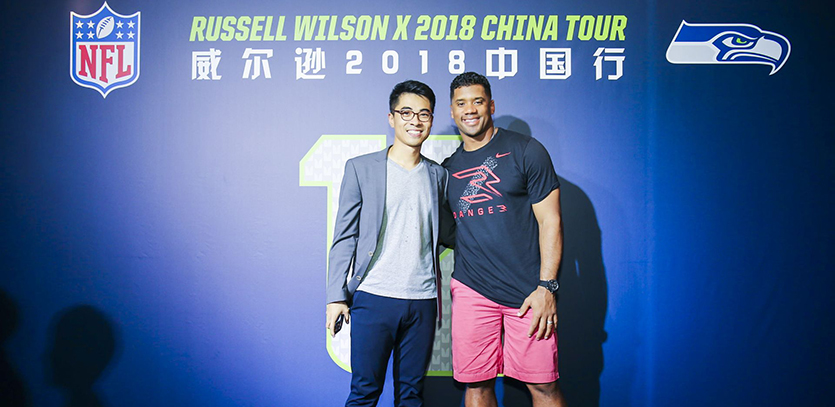Design Thinking in the NFL
MMM '19 student applied design research methods during internship

Applying design thinking in the business of sports? No way.
That was what I thought before starting my summer internship with the NFL. In fact, I was so excited about landing a job in an industry I want to switch into post-MBA that all I thought about was learning the basics, networking as much as I can, and simply doing a good job. Little did I know that my MMM skill set would be so valuable for my internship.
I spent six weeks of my internship in China, where the NFL has a keen interest in introducing American football and building a fan base. One of the key initiatives I worked on was to create a youth football training strategy that would grow a new generation of local Chinese football players. It is easier said than done, considering American football is as foreign of a sport as you can imagine for a regular Chinese kid, and systematic youth athlete development is not something that the NFL has done even in the US.
As for any strategic project, the business development director wanted a traditional market analysis: size of the actionable market, current competitive landscape, SWOT analysis of NFL's local capabilities in China, and potential opportunities. I did all that, but my MMM training got me thinking: the consumer's perspective is missing. Consumer, in this case, is not only the target audience of 6-12 year-olds but also their parents. I thought, wouldn't it be great to hear directly from parents what they think about sending their kids to football training programs, why, and what they would like to see?
With that in mind, I took what I learned from Research-Design-Build to test. First, I built a survey for parents using research design methods. And then my team and I went out on a field in Shanghai where football camps were held to interview parents. After that, I shared the learnings with the team and synthesized key themes from our collective interview notes. It was rewarding to hear that the insight around how Chinese parents really care about the experience of the program and the physical well-being of their children was incorporated into the “why” and “how” of the final market analysis, which made its way to the desk of the head of NFL China.
My experience speaks to the value and strength of design thinking. While traditional analysis is important, a user-centric approach complements it and provides the full picture of any business venture. When asked about MMM in the future, I can always point back to my internship and say that's the power of design and that's why I chose the MMM program.
